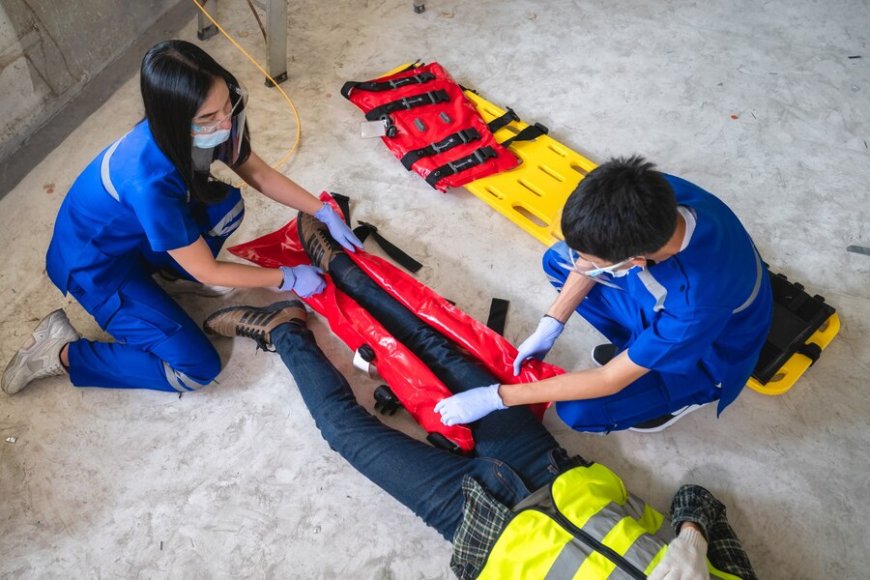Role of Social Workers and Professionals in Emergency Removals
Emergency removal services are designed to address the problems without delay and safely deal with such items to avoid further adversities

Emergency removal services are designed to address the problems without delay and safely deal with such items to avoid further adversities. These services have well-equipped staff. They can handle disasters like environmental threats, debris after disasters, or unexpected demolitions.
Interactivity and quickness are part of the requirements expected of a company that engages in emergency removal services. It is usually hard. But, providers are good at evaluating the situation. They make a removal plan and take action to cut the risk of damage or interference. They are good at removing risky waste. They also handle sudden demolitions and low-expected biohazards.
Emergency removals respond quickly to any crisis. This is because they understand the situation and stick to quality. They handle any crisis fast and with total professionalism. This ensures that things get back to normal quickly. Despite cases of emergency removal, human rights are of top importance. Procedures must not hurt the person's dignity, self-governance, or their legal, national, and international rights.
Role of Social Workers and Legal Experts in Emergency Removals
Social workers and legal personnel, especially in the case of an emergency removal, must protect a person's well-being. The professionals must follow the legal and ethical rules. Evaluating safety is a major task for social workers. They must determine if the people they work with suffer abuse, neglect, or other dangers.
They work with some of the most marginalized groups in society ensuring they give their voice in court and protect them from abuse among other functions like referring services such as shelters for the needy.
Lawyers help clients find tough legal issues with emergency removals. They guarantee that all the actions are legal, lawful, and in compliance with the process and protection of the legal and constitutional rights of the persons concerned. This covers legally recognized procedures. It also covers police cooperation and the operation's legal results at the company.
Social workers and legal professionals work together. They do this while respecting the law and professional ethics. Both of them play a role in reducing the risk factors necessary to accompany, and to make sure that emergency removals are done appropriately and with respect and fairness.
The Process of Conducting an Emergency Removal
An emergency removal cannot be done at will due to a raised concern. Instead, there are specific procedures that must be strictly followed. They prevent harm and break the law. They also help to find the right type of intervention.
Initial Assessment
A social worker or a police officer evaluates the situation with the view of establishing if any of the involved individuals require protection in the immediate future.
Legal Authority
The legal profession then goes through the laws and regulations governing on determination of the authority under which the removal under an emergency can be effected. This may include using court orders or warrants if permitted by the law.
Notification
Whenever possible, the patients or other nearest relatives or guardians if they are the ones to be removed are informed of the intended action despite the fact the information may be lethal.
Safety Planning
They prepare an assault safety plan with the client. This happens when the client or someone in their house is being abused. The plan means the worker finds where the abused person can find refuge, medical care, or counseling.
Coordination
A multiplicity of actors in a client’s life: social workers, legal representatives, police and/or security officers, medical staff, and any other relevant organizations (for example, child protection services) make sure that the removal process is as holistic as possible.
Documentation
Computerized record keeping of the status of the child, reasons for removal, record of the assessments carried out, actions that have been taken, and decisions that have been made is of legal and administrative necessity.
Transport and Placement
Transportation and allocation in a safe environment are provided as soon as possible, taking into account the peculiarities of the participants’ situation.
Follow-Up
After removal, supervisors continue tracking and further evaluations to make sure that the clients are protected and are also availing of the required support services. This is also defining any legal issues that may exist or a legal remedy in case of an appeal.
Court Proceedings
When the removal incorporates legal processes like custody matters or the issue of guardianship, legal experts still work under the capacity of the parties in interest.
Reintegration or Long-Term Planning
As the case may be, everyone attempts to ensure that people are repatriated or resettled to a more permanent and secure environment for their own sake.
Conclusion
Emergency removal services are a preventive measure. They are ideal for situations that need a quick and efficient intervention. The goal is to protect people or communities. These services are provided under time-sensitive situations focusing on safety while observing the law and ethical issues.
Emergency removal services achieve procedural justice through detailed planning. They do this by the interaction between professionals and strict adherence to the guidelines. They are vital for protecting endangered groups from immediate threats. These threats may include people in bad situations, toxic substances, or sudden danger.
Emergency removal services reduce the effects of crises or unsafe conditions. They also bring hope, strength, and value back into the lives of victims.












